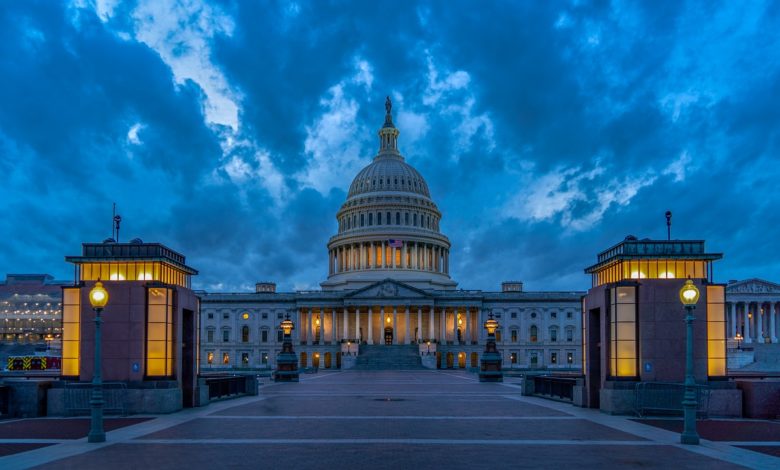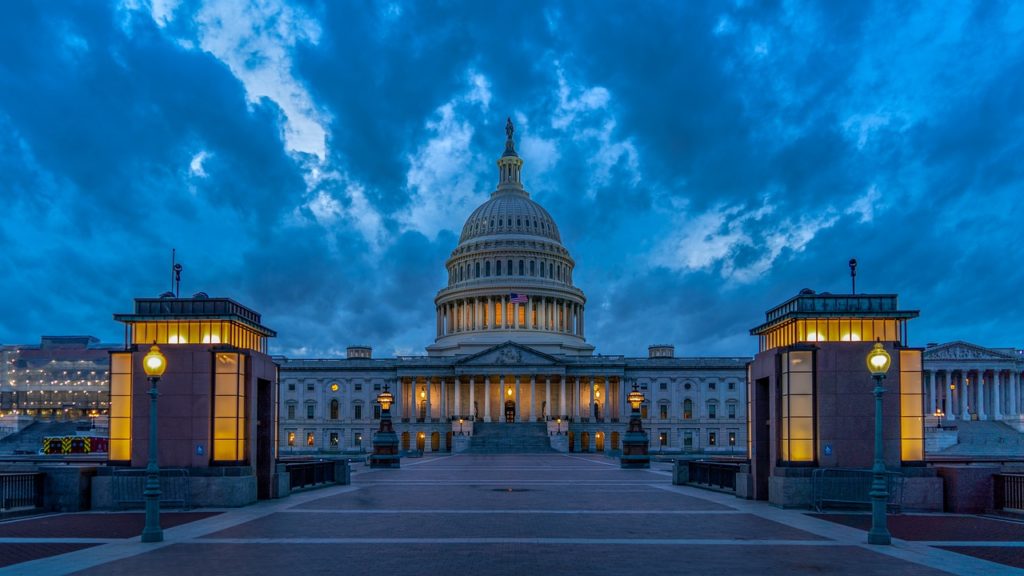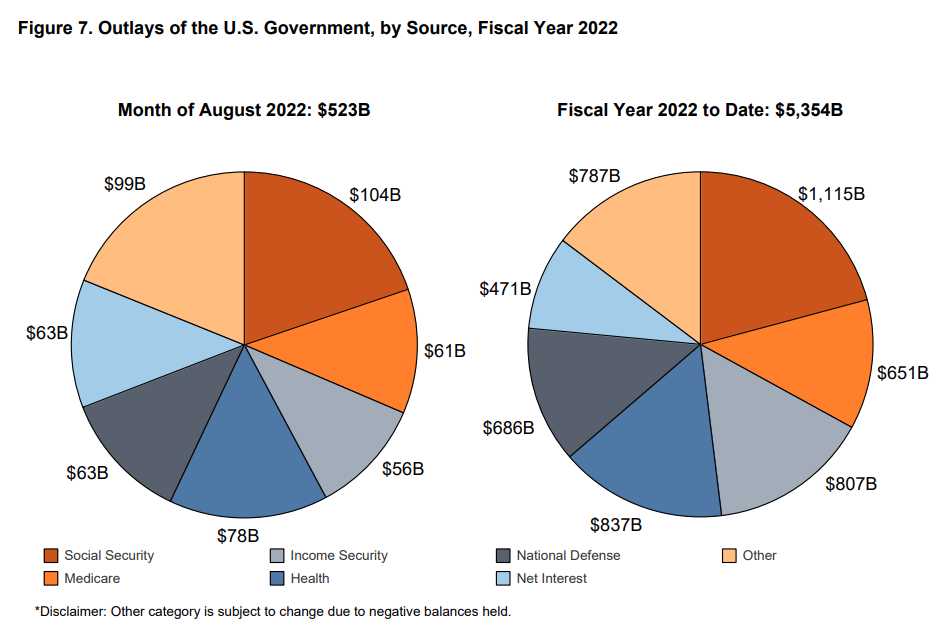Some Things Never Change: US Government Runs Another Big Deficit in August

Some things never change — such as the federal government spending more money than it has month after month after month.
August was no different. The US government ran a massive $219.6 billion budget deficit last month, according to the latest Monthly Treasury Statement. That nudged out July as the second-largest monthly deficit in fiscal 2022.
The budget deficit for fiscal 2022 now stands just below $1 trillion at $945.7 billion, and it continues to grow despite a big increase in federal government receipts. This indicates that Uncle Sam has a spending problem that it refuses to even acknowledge, much less get under control.
Prior to the pandemic, the US government had only run deficits over $1 trillion four times — all in the aftermath of the 2008 financial crisis. Trump almost hit the $1 trillion mark in 2019 and was on pace to run a trillion-dollar deficit prior to the pandemic. The economic catastrophe caused by the government’s response to COVID-19 gave policymakers an excuse to spend with no questions asked. Now it appears the government is settling back into the status-quo – running ’08 financial crisis-like deficits every single year.
The US government took in $303.73 billion in August. That was up 12.8% from July and 23% from August 2021.
The feds have been rolling in the dough all year, reporting over $4.4 trillion in receipts for fiscal 2022. Government revenues are already up 10% over last year with another month left to go.
Unfortunately for the federal government, the CBO expects this revenue surge to wane.
Individual income tax receipts are projected to decline as a share of GDP over the next few years because of the expected dissipation of some of the factors that caused their recent surge. For example, realizations of capital gains (profits from selling assets that have appreciated) are projected to decline from the high levels of the past two years to a more typical level relative to GDP. Subsequently, from 2025 to 2027, individual income tax receipts are projected to rise sharply because of changes to tax rules set to occur at the end of calendar year 2025. After 2027, those receipts remain at or slightly below the 2027 level relative to GDP.”
As the economy spins deeper into a recession as the Fed tightens monetary policy to fight raging inflation, you can expect revenue to tank further, meaning even bigger budget shortfalls.
On the other hand, spending isn’t about to wane.
The US government has spent money at roughly a half-billion per month clip all year. In August, Uncle Sam blew through another $523.3 billion. This brought total spending for fiscal 2022 to just over $5.35 trillion.
Spending has fallen from last year, as pandemic programs wound down. But the US government is still handing out COVID stimulus and it wants more. Congress recently pushed through another massive spending bill. Meanwhile, the US continues to shower money on Ukraine and other countries around the world. And we haven’t begun to see the impact of student loan forgiveness.
This is a big problem for the Federal Reserve as it drives up interest rates hoping to tame inflation. Interest on the federal debt totaled $88 billion in August. That was up from $58 billion in the same month last year. Year-to-date, the interest on the federal is up 29% to $678 billion.
More significantly, the US government can’t keep borrowing and spending without the Fed monetizing the debt. It needs the central bank to buy Treasuries to prop up demand. Without the Fed’s intervention in the bond market, prices will tank, driving interest rates on US debt even higher.
A paper published by the Kansas City Federal Reserve Bank acknowledged that the central bank can’t slay inflation unless the US government gets its spending under control. In a nutshell, the authors argue that the Fed can’t control inflation alone. US government fiscal policy contributes to inflationary pressure and makes it impossible for the Fed to do its job.
Trend inflation is fully controlled by the monetary authority only when public debt can be successfully stabilized by credible future fiscal plans. When the fiscal authority is not perceived as fully responsible for covering the existing fiscal imbalances, the private sector expects that inflation will rise to ensure sustainability of national debt. As a result, a large fiscal imbalance combined with a weakening fiscal credibility may lead trend inflation to drift away from the long-run target chosen by the monetary authority.”
This clearly isn’t in the cards.
Something has to give. The Fed can’t simultaneously fight inflation and prop up Uncle Sam’s spending spree. Either the government will have to cut spending or the Fed will have to keep creating money out of thin air in order to monetize the debt. You can decide for yourself which scenario you find more likely.
The national debt currently stands at $30.9 trillion. The Treasury increased the total debt by $27 billion in June alone.
According to the National Debt Clock, the debt to GDP ratio is 124.47%. Despite the lack of concern in the mainstream, debt has consequences. More government debt means less economic growth. Studies have shown that a debt-to-GDP ratio of over 90% retards economic growth by about 30%. This throws cold water on the conventional “spend now, worry about the debt later” mantra, along with the frequent claim that “we can grow ourselves out of the debt” now popular on both sides of the aisle in DC.
To put the debt into perspective, every American citizen would have to write a check for $92,718 in order to pay off the national debt.
Call 1-888-GOLD-160 and speak with a Precious Metals Specialist today!
Buka akaun dagangan patuh syariah anda di Weltrade.
Source link








